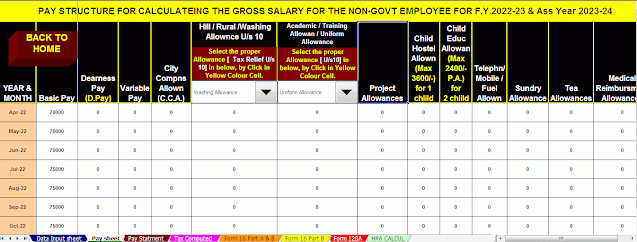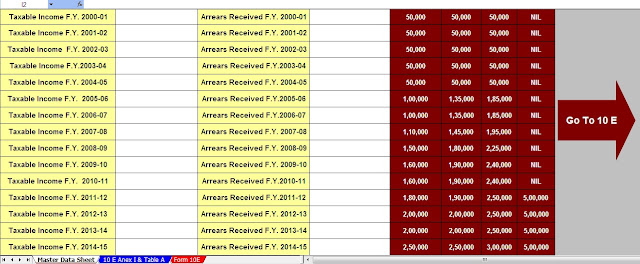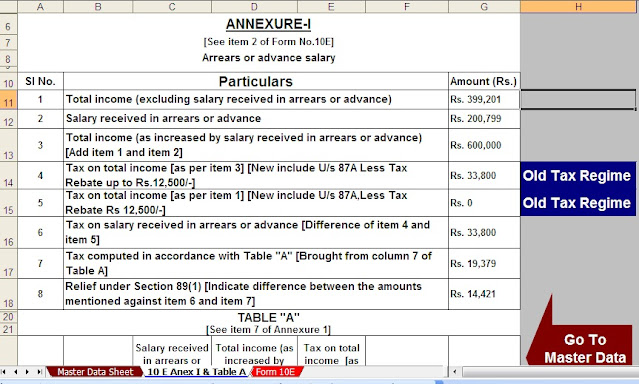U/s 89 (1) Income Tax Arrears Relief Calculator | What happens if you get paid late? If that's really the
case, you may be concerned about the tax consequences of that. Is it necessary to pay taxes on the total
tax base? Shouldn't something be said about last year's tax checks and the like? For taxpayers with
these requests in mind, here's everything you need to know.
You may also like- Auto Fill Income Tax Preparation Excel Based Software for the Govt and Non-Govt Employees for the Financial Year 2022-23
Now, it has recently been determined that income tax is calculated on the total income of the taxpayer for a given year. The income can be a salary, a family pension, or various sources of income. Regardless, there may be circumstances where you received family benefits or future wages during the current tax year. It may happen that a taxpayer receives a part of the benefit or salary from her before or after any year in relation to cash, increasing his total income similarly by increasing the taxes payable. In this case, an application can be filed and the reviewing authority can allow the exemption to the taxpayer. In short, the income tax law guarantees the equality of income tax rates, so that when a part of the income obtained is not determined with the current year, a tax exemption is granted in order not to increase taxable income.
To make sure you are not at fault for paying additional taxes, the Income Tax Office issues U/s 89(1) for the exemption. If you received any pension or benefit from the prior year, you will not pay tax on the full amount for the current year. Essentially, you are far from paying additional taxes given the way the fee has been deferred.
You may also like- Auto Fill Income Tax Preparation Excel-Based Software for the Non-Govt Employees for the Financial Year 2022-23
To take advantage of Section 89(1) preferences, you must file Form 10E. The nuances of Form 10E, how and why you enter the comparison, are detailed below.
What is relief under Section 89(1)?
Exactly when the taxpayer receives:
1. Delay in payment of wages
2. Salary in advance or
3. Delay the family pension
Until then, said amount is subject to tax in the monetary year in which it is obtained.
However, an exemption is provided under Section 89(1) to reduce the additional tax burden due to the deferral of receipt of such income.
You may also like – Auto Fill Income Tax Form 16 Part A&B and Part B
in Excel for the Financial Year 2022-23[One by One Preparation Excel Utility]
How is
the exemption calculated under Section 89(1)?
The following shows how the exemption under Section 89(1) of the Income Tax Act 1961 is calculated:
1. Calculate the tax to be paid on the total rent in arrears for the year in which it was obtained.
2. Calculate the tax to be paid on the total income, excluding the arrears of the year in which it was due.
3. Calculation is somewhere in the range (1) and (2).
4. The tax to be paid on the total taxable base of the year to which the arrears refer, including arrears.
5. Calculation is somewhere in the range (4) and (5).
6. The amount of the exemption will be the amount that is more than (3) more than (6). Dilution will not be allowed if the value of (6) is greater than the value of (3).
What is
Form 10E?
To secure exemption under Section 89(1) for back wages received, it is necessary to file Form 10E with the Department of Income Taxes. If Form 10E is not filed and the exemption is granted, the taxpayer is on the way to obtaining a notice from the Income Tax Office for failure to file Form 10E.







0 Comments